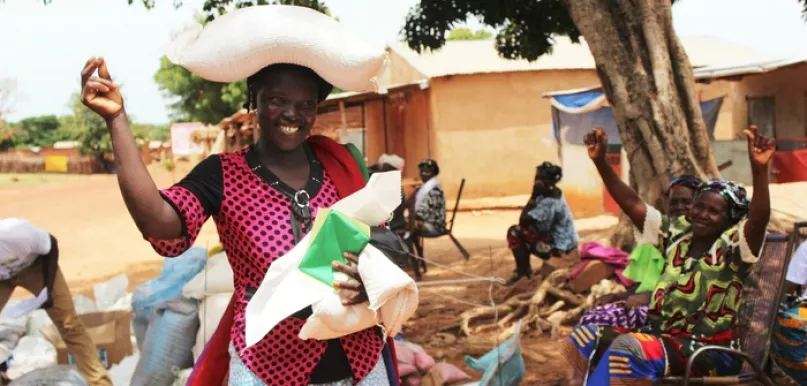The Story of Her: Gender Insights from FinScope

In the recent webinar, Gender Insights from FinScope, Mr. Abel Motsomi, Senior Information and Research Specialist at FinMark Trust, presented use cases for gender data from FinScope consumer surveys. Sponsored by the Working Group on Measurement and Data of CGAP’s Finequity Community of Practice (COP), this was the fourth in a series of webinars which aim to shed light on existing sex-disaggregated demand-side data in financial inclusion. This time the focus was on FinScope’s layered approach to data collection and analysis, which allows us to explore women’s empowerment at the individual, household, and community levels.
What do we mean by a layered approach?
The layered approach to data collection and analysis is the practice of using surveys and questionnaires to understand how women approach their finances and cooperate with their surroundings. Collecting and analyzing sex-disaggregated demand-side data in this way provides insights into interactions between women and their communities and households, therefore providing a starting point for diagnostics and program interventions targeting women’s financial decision making.
Why is the layered approach important?
As highlighted in previous webinars looking at the Global Findex and Financial Inclusion Insights, significant access and usage gaps remain between men and women despite advances in expanding financial access through account ownership. Many women also remain dependent upon their husbands, with about one in three married women from developing countries having no control over household spending on major purchases, and about 10% not being consulted about the way their own earnings are spent.
The causes of women’s financial exclusion and economic vulnerability are complex and layered – ranging from the gendered norms in their culture, social and community contexts, household dynamics, and women’s individual financial needs and capabilities. All of these factors combine to influence intra-household bargaining power for women and their decision-making. Thus, a layered approach is key to help us make sense of it all and enhance our understanding of – and ability to influence – the factors causing women’s financial exclusion.
What kind of insights can the FinScope surveys provide?
FinScope consumer surveys offer insights that help us understand the layers of interactions between women and their communities and households. Like the FII gender module featured in the COP’s previous blog, FinScope survey questionnaires collect sex-disaggregated information for various indicators, including proximity to financial services such as banks, auxiliary touch points such as medical centers, membership in social groups, and access to amenities such as clean water and sanitation. Questions covered include:
- Whether she has a small business to make ends meet (individual level);
- How she makes financial decisions (household level);
- How she accesses financial services in her community (community level).

The findings are striking because of the high rates of financial exclusion they reflect, and evidence of rich social networks that financial inclusion programming often fails to tap into. Analysis of 2017 FinScope data has shown that the uptake of financial services such as formal credit is low among women in DRC (1%), Swaziland (7%), and Botswana (14%), and that women are very reliant on informal financial services. Further, the FinScope data from 2017 shows that 50% of women and 33% of men in Kenya belong to social groups, as opposed to 87% of women and 85% of men in DRC. These are important layered insights about the lives of women because they shed light on where program interventions can be designed to be more financially inclusive.
FinScope findings can therefore be of value to policymakers who wish to develop policies aimed at improving the functioning of financial markets, to private service providers who are able to design product strategies around the segmentation and trends highlighted by the data, and to donors and non-governmental agencies who wish to support increased financial inclusion to specific regions or population groups.
Call to action
FinScope data provides rich fodder for organizations taking a holistic approach to women’s financial inclusion in their programming. The data is publicly accessible via Insights2Impact (i2i) data portal and the UNCDF Making Access Possible (MAP) data portal. i2i provides extensive access to 26 datasets, national surveys from 14 countries, and financial diaries from six countries; whereas UNDF MAP provides access to data from 12 countries. We encourage you to explore these easy-to-use and engaging dashboards to uncover further insights.
Looking forward, FinMark Trust plans to develop 15 questions in a dedicated women-centric module to understand how women and men make financial decisions and will look to pilot these questions in forthcoming surveys. Other future activities are outlined in the table below.

Subscribe to the COP mailing list for information about future interactive learning opportunities.


